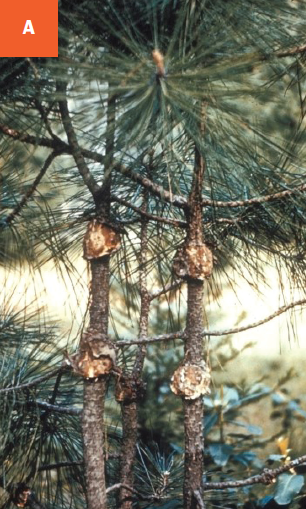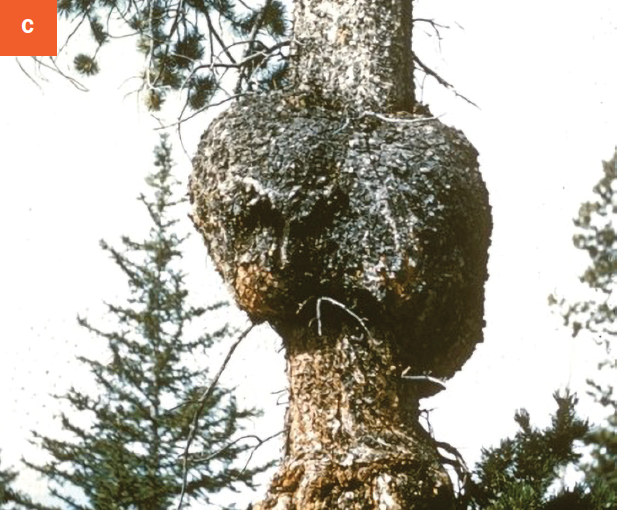Western Gall Rust
Endocronartium harknessii (fungus)
HOST Two- and three-needle pines like lodgepole pine, Mugo pine, Scots pine, Austrian pine, Ponderosa pine
DAMAGE/SYMPTOMS Rough, spherical galls develop on branches or trunks. Yellow to orange spores are produced on galls in late spring. Foliage of affected limbs may become stunted beyond the galls. Affected tree limbs are more prone to breakage where the galls grow. This disease may kill young trees but on mature trees, galls can grow and expand for many years. Severely affected limbs will die over time.
DISEASE CYCLE This fungus doesn’t require an alternate host to complete its life cycle. In late spring, during shoot elongation, yellow to orange spores are produced on the galls and dispersed by wind and splashing rain and infect new shoots. Shoots are prone to infection from budbreak through shoot elongation.
MANAGEMENT Remove affected trees whenever possible, especially if their structural stability becomes compromised. Prune out and remove infected branches during the dormant season (October to January). Disinfect pruning tools between cuts with 70% ethyl alcohol or a standard household disinfectant spray. Fungicide applications are not recommended in urban areas.
A Young galls on pine trees. B Bright yellow to orange spores on gall. C Mature galls on older tree.



